How to Buy Salmon Like a Pro
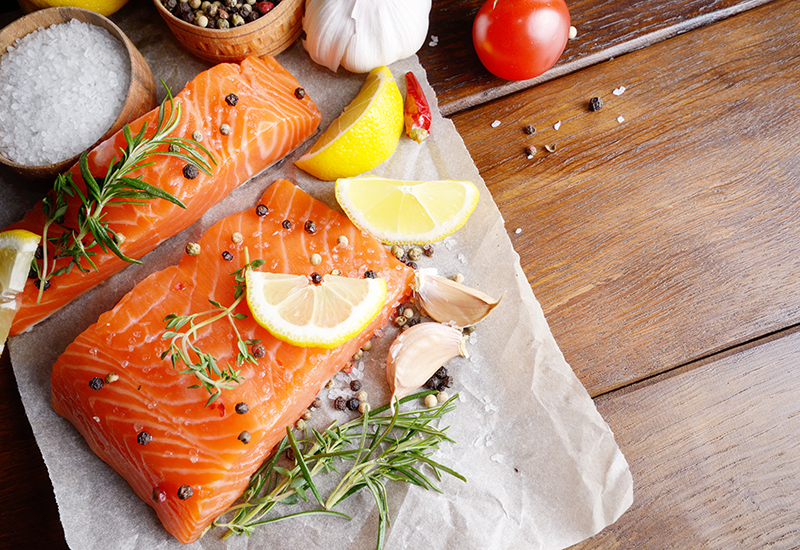
The following information was provided courtesy of local cookbook author and chef, Carla Snyder. Learn more about Carla at Ravenouskitchen.com.
Salmon is easy to like. It’s tender, yet firm with a mild taste and a versatility that pairs beautifully with just about any spice, flavoring or vegetable. Even better, it cooks quickly with so many methods including grilling, pan-searing, poaching and roasting.
Despite all these perks, selecting salmon at the grocery store can be tricky. With so many options, even professional cooks (and cookbook authors) have questions like, “Why are there so many varieties?” and “What’s the deal with farmed salmon?” Let’s sort this out together with some salmon 101.
What is Wild Salmon Season?
Wild salmon season runs from April through October. It’s during these months that salmon leave the ocean where they’ve reached maturity and swim back to the freshwater lakes and streams where they were hatched. You see, salmon are anadromous, meaning they are hatched in freshwater lakes and streams and then migrate as young fish to the ocean to mature as adults. Because the journey back to these fresh waters can take months, the fish start the trip fat and strong. Once home again, the females lay eggs, the males fertilize them and then the adult fish die, providing food for other animals in the ecosystem.
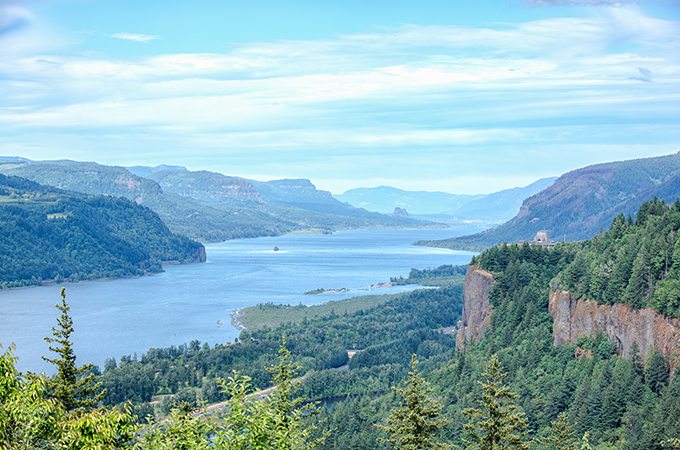
The fresh salmon on ice in the seafood case at Heinen’s is caught in the ocean while migrating back to those freshwater lakes and streams. They are caught with nets in the cold waters of northern oceans and filleted and frozen on board the ship or chilled and later flown to destinations all over the globe.
What are the Nutritional Benefits of Wild Salmon?
All wild salmon is an excellent source of protein, omega-3 fatty acids, selenium, phosphorus and potassium. A 3-4 ounce serving of salmon is about 200 calories. It’s very low in saturated fat and one of the best sources of vitamin B12, iron and vitamin D.
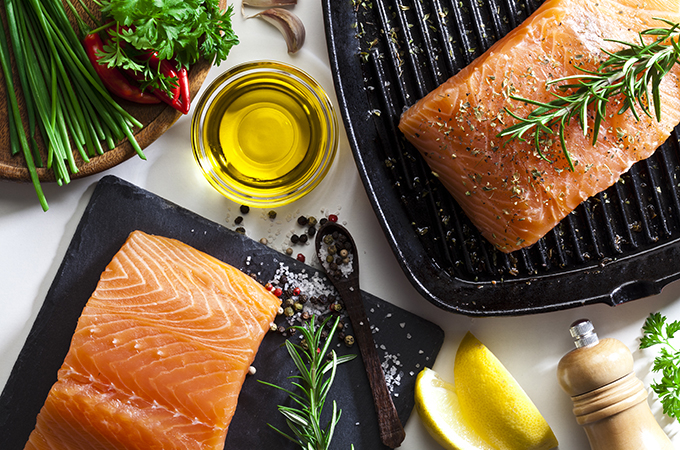
What are the Varieties of Wild Salmon?
Most wild salmon sold in the U.S. is caught in the Pacific Northwest and Alaska. One of the most popular sources of wild salmon is the Copper River. Starting in May and stretching through September, the Copper River season is awaited around the world for its renowned wild king, sockeye and coho salmon. These fantastic fish are the crown jewels of the salmon world. In preparation for their herculean task of swimming up the 300-mile Copper River, these salmon pack on rich energy reserves, which translates into big, fat, luscious fish for our dinner tables.
Fresh vs. Frozen Salmon
If you love salmon, spring and summer are two of the most delicious seasons, but don’t assume that fresh is always better than frozen fish. Sometimes frozen is as good, or better, than fresh. Plenty of frozen fish is put on ice on boats right after it’s caught to preserve freshness, plus advancements in vacuum-packing technology has boosted the quality of frozen fish. In short, don’t be afraid of the frozen stuff if you trust the source. You’ll definitely be eating previously frozen salmon if you opt for wild varieties outside of their April-October season.
Fresh Wild Salmon Found at Heinen’s
The fresh wild salmon available at Heinen’s during salmon season includes:
Sockeye Salmon
The second most abundant Alaska salmon species, sockeye weigh about 6 lbs. when harvested.
- Distinctive red, firm flesh and rich flavor
- One of the most popular wild salmon species
- Available fresh from June to July or refreshed or frozen year-round
- Perfect for grilling, broiling, sautéing, poaching, steaming and roasting
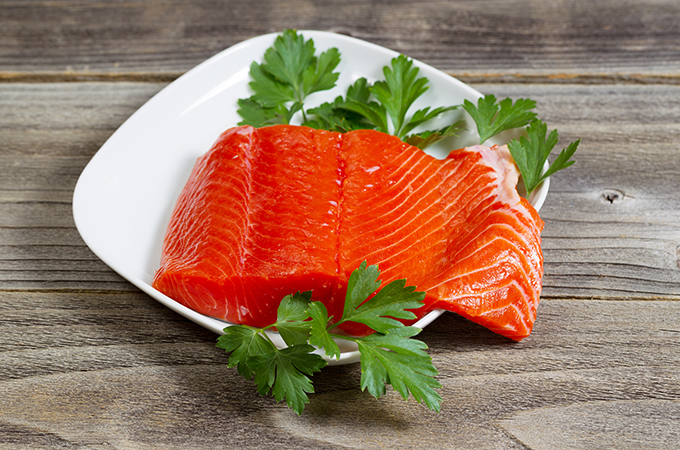
Coho Salmon
Coho salmon, also known as silver salmon, is an easy fish to work with and slightly milder in taste than some of the other wild Pacific salmon species, such as sockeye or king.
- Slightly milder in taste
- Color of flesh can run from light pink to garnet
- Firm flesh with lower fat content
- Available fresh from July to October
- Perfect for grilling, broiling, sautéing, poaching, steaming and roasting
King Salmon
Sustainably fished in Alaska, Washington State and Oregon, king salmon are among the finest salmon caught in the world.
- Available fresh during salmon season
- Rich, red flesh
- High oil content
- Available fresh from late April to late June
- Perfect for grilling, broiling, sautéing, poaching, steaming and roasting
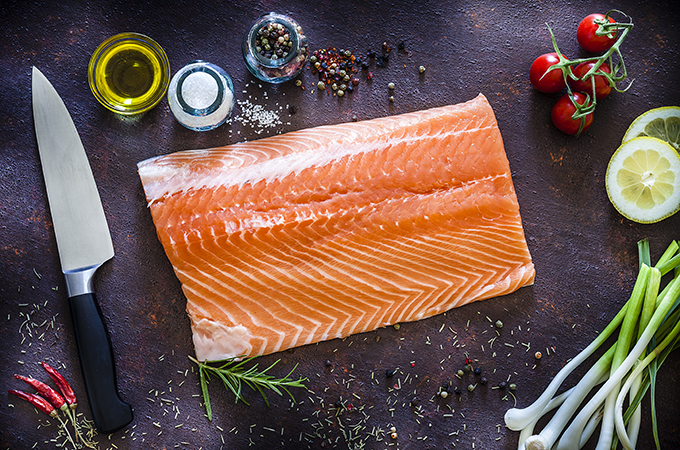
Troll King Salmon
Troll king salmon are caught on individual baited lines instead of the traditional net-caught method. Troll caught kings are harvested while they are still growing and aggressively feeding, giving them a higher fat content and richer taste.
- Available fresh during the summer months
- Stronger taste
- Bright red flesh with a rich, buttery flavor
- Perfect for grilling, broiling, sautéing, poaching, steaming and roasting
Farmed Salmon Found at Heinen’s
For those of you who like salmon with a lighter taste, sustainably farmed salmon is available fresh, year-round. Farmed salmon comprises about 73% of salmon sold at market with most of it originating from Chile, Norway and Ireland. Most farmed salmon is raised in cold ocean waters inside nets or pens. These farmed fish are fed a healthy diet of fish trimmings with no antibiotics or hormones.
When compared to wild, farmed salmon is higher in fat, containing slightly more omega-3s, much more omega-6s and three times the amount of saturated fat. Conversely, wild salmon is higher in minerals, including potassium, zinc and iron. Any which way you choose, wild or farmed, salmon is delicious and good for you.
Farmed salmon available year-round at Heinen’s includes:
Verlasso Salmon (Chile)
- Buttery mouth feel and bright taste
- Firm texture and mild flavor
- Lower in fat than most conventional farmed salmon
- No residual fishy flavor
- Perfect for grilling, broiling, sautéing, poaching, steaming and roasting
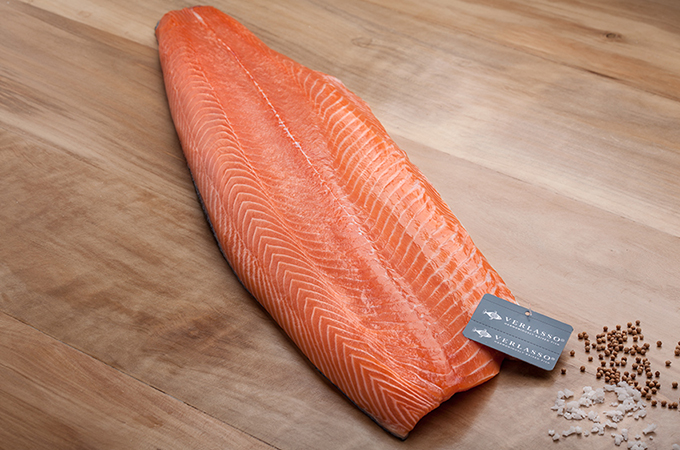
Sixty South Salmon (Tierra del Fuego)
- Well marbled fat lines pair with an elegant pink flesh and shimmery healthy skin
- Icy cold waters promote a unique and buttery flavor profile
- Firm, delicate texture that is light in the mouth
- Perfect for grilling, broiling, sautéing, poaching, steaming and roasting
Organic Irish Salmon (Ireland)
- Look and texture similar to wild salmon
- Buttery flavor
- Lower in fat than most conventional farmed salmon
- Perfect for grilling, broiling, sautéing, poaching, steaming and roasting
Luscious, meaty and full of good-for-you-alpha omegas, salmon is one of those magical foods that is both healthy and truly delicious at the same time. No matter how you cook it, the real trick to a tasty meal is buying a great piece of fish in the first place. Look for plump, moist flesh and shiny skin with no sliminess and remember to always ask your Heinen’s fishmonger for guidance if you need it.
This year looks very promising for wild salmon, so get ready to make the most of the season and celebrate with a variety of fish you’ve never had before. Wild or farmed, you just might find a delicious new favorite.


